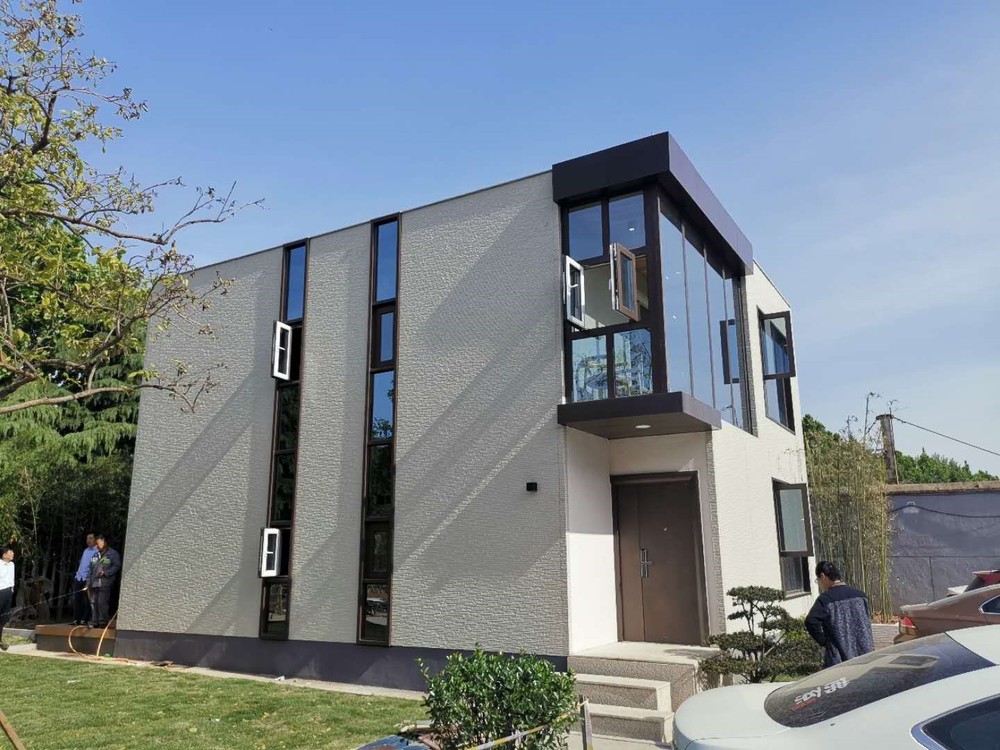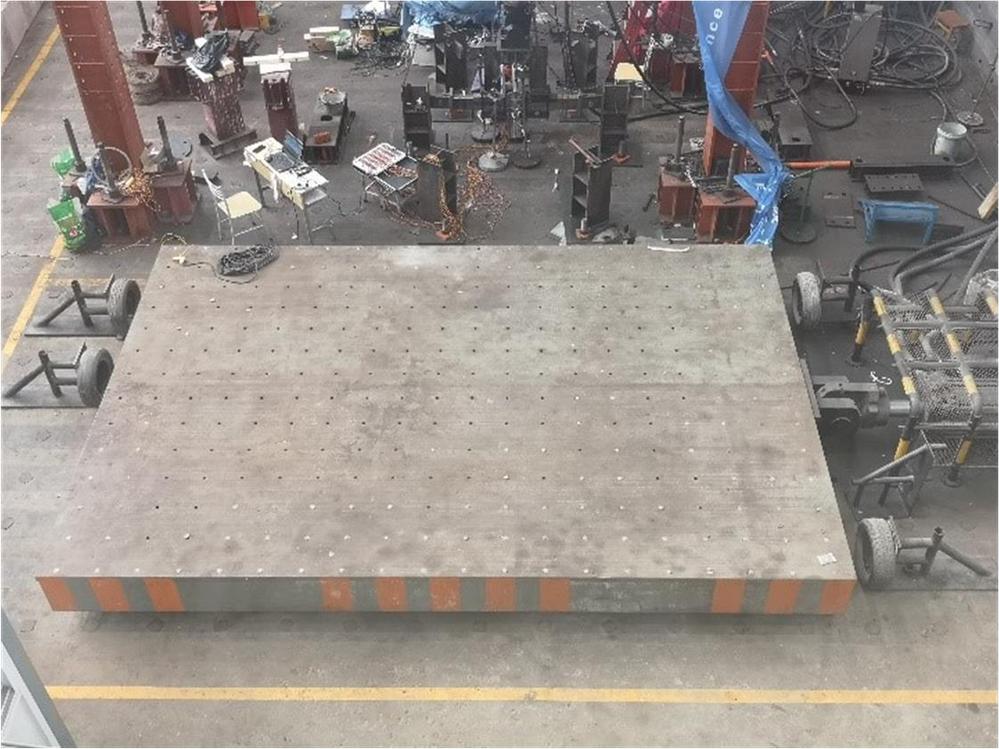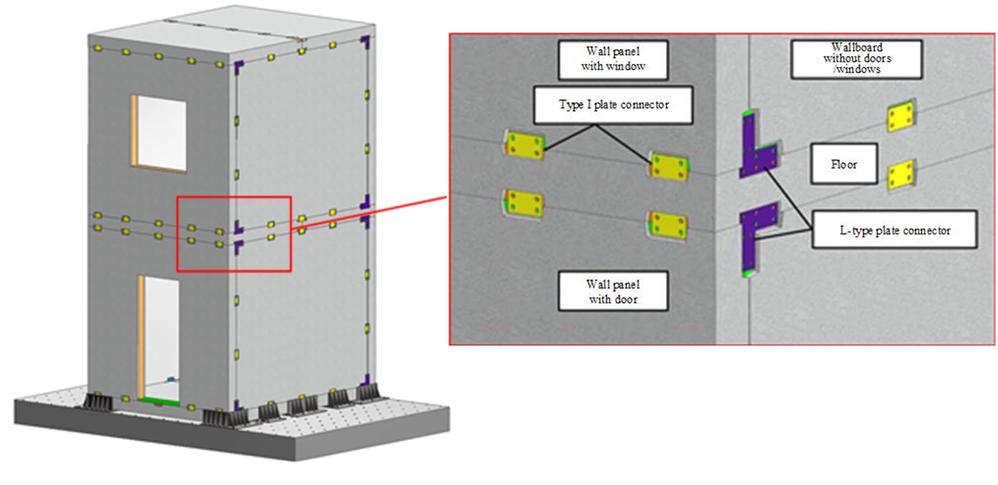With the continuous development of China's rapid urbanization process, to meet people's growing huge housing demand, a large number of houses need to be built or replaced in both urban and rural areas. At present, most self-built houses in rural China adopt brick concrete structure or frame structure, and seismic design or reinforcement measures are usually not considered, which is easy to be damaged greatly in natural disasters such as earthquake and typhoon, and thermal insulation measures are not considered in construction, resulting in large heat loss of buildings. Compared with the traditional cast-in-situ construction scheme, the prefabricated construction scheme has the advantages of higher construction quality, better structural durability, faster construction and installation process and higher construction safety, and is less affected by bad weather (Kurama et al. 2018; O'hegarty and Kinnane 2020; Singhal et al. 2019). In the residential market in rural areas, the prefabricated concrete sandwich wall panel structure system has great potential, as shown in Fig. 1.

Fig. 1 prefabricated concrete sandwich wallboard structure residence

Fig. 2 Typical precast concrete sandwich panel
The precast concrete sandwich slab is composed of two concrete layers and sandwich insulation layer. The concrete layers are connected by shear connectors to form a whole part, forming a structure similar to a sandwich. As shown in Fig. 2, it is a typical precast concrete sandwich slab with truss shear connectors. Relevant studies have verified that precast concrete sandwich panels have good seismic performance, flexural performance, shear performance and composite effect, and can be used as wallboards and floors of precast concrete structural systems in seismic areas (Goh et al. 2014; Lee and Pessiki 2008; Naserpour and Fathi 2021; Palermo and Trombetti 2016; Pessiki and Mlynarczyk 2003). When subjected to strong horizontal seismic load, the connection between wallboards and between wallboard and floor is very important. Some studies have shown that dry connections in the form of bolts can provide sufficient strength and stiffness for precast concrete structures to maintain their structural integrity (Guo et al. 2019; Malla et al. 2021; naserpour and Fathi 2021; sun et al. 2019). As a passive energy dissipation device, viscoelastic damper is widely used in structural vibration control technology. It has the advantages of high energy dissipation, simple structure, convenient installation, low in price and easy maintenance. Most of the energy dissipation modes of viscoelastic dampers are in shear form deformation with energy dissipation of viscoelastic materials. A typical viscoelastic damper is made of two layers of viscoelastic materials vulcanized and bonded between three steel plates. On the basis of this typical form, some new damper forms have been developed, such as cylindrical damper, square column damper, fan damper and tension compression damper (Hsu and fafitis 1992; Xu et al. 2017; Zhang et al. 2021). Compared with the tension compression viscoelastic damper, the shear viscoelastic damper is easy to be damaged and has poor recoverability under large deformation.
At present, there is a lack of research on the overall seismic performance of prefabricated concrete sandwich panel structure. Most of the existing dampers only consider the damping control in a single direction, which is difficult to be applied in buildings such as prefabricated wallboard structures. In addition, the joint connection reliability of precast concrete structure is poor, which is often difficult to meet the stress requirements under cyclic load. Therefore, a new multi-dimensional damping device applied to the precast wallboard structure system is proposed, which can improve the integrity and seismic performance of the precast concrete structure. The device dissipate energy through the compression deformation of viscoelastic materials. The full-scale shaking table test is carried out for the prefabricated concrete sandwich wall panel structure (uncontrolled structure) and the damping structure (controlled structure) equipped with the new multi-dimensional damping device.

Fig. 3 Horizontal hydraulic vibration table
The test will be carried out on the horizontal hydraulic shaking table in the civil engineering experimental center of Jiulonghu Campus of Southeast University, as shown in Fig. 3. The test model is a full-scale two-story prefabricated concrete sandwich wall panel structure, with a length of 3.8m, a width of 3m and a total height of 6.2m. It is composed of 6 floors and 8 wallboards, all of which are precast concrete sandwich plates with a thickness of 200mm. Angle steel is embedded in the concrete as the closed outer frame of the reinforcement grid of wallboards and floors. The wallboards on the East and West facades are provided with door openings and window openings. The connections between wallboards and and between wallboards and floors are connected by high-strength bolts and galvanized connectors, Fig. 4 shows the three-dimensional schematic diagram and connection details of the test structure. The seismic fortification intensity is 8 degrees, the design basic acceleration is 0.2g, the seismic grade is grade II, and the site category is class II.

Fig. 4 Three dimensional schematic diagram and connection details of test structure
Through this test, it is planned to understand the failure mode and seismic performance of prefabricated concrete sandwich wall panel structure under seismic load, analyze the mechanical performance of bolted dry-type connection structure under seismic load, compare the acceleration and displacement responses of uncontrolled structure and controlled structure, and evaluate the seismic performance, Explore the damping mode and damping effect of the new multi-dimensional damping device.
References
[1] Goh, W. I., Mohamad, N., Abdullah, R., and Samad, A. A. A. (2014). “Finite element analysis of precast lightweight foamed concrete sandwich panel subjected to axial compression.” The 3rd International Conference on Computer Engineering and Mathematical Sciences, 35–41.
[2] Guo, W., Zhai, Z., Cui, Y., Yu, Z., and Wu, X. (2019). “Seismic performance assessment of low-rise precast wall panel structure with bolt connections.” Engineering Structures, Elsevier, 181, 562–578.
[3] Hsu, S., and Fafitis, A. (1992). “Seismic analysis design of frames with viscoelastic connections.” Journal of structural engineering, American Society of Civil Engineers, 118(9), 2459–2474.
[4] Kurama, Y. C., Sritharan, S., Fleischman, R. B., Restrepo, J. I., Henry, R. S., Cleland, N. M., Ghosh, S. K., and Bonelli, P. (2018). “Seismic-resistant precast concrete structures: state of the art.” Journal of Structural Engineering, American Society of Civil Engineers, 144(4), 3118001.
[5] Lee, B.-J., and Pessiki, S. (2008). “Experimental evaluation of precast, prestressed concrete, three-wythe sandwich wall panels.” PCI journal, 53(2).
[6] Malla, P., Xiong, F., Cai, G., Xu, Y., Larbi, A. S., and Chen, W. (2021). “Numerical study on the behaviour of vertical bolted joints for precast concrete wall-based low-rise buildings.” Journal of Building Engineering, Elsevier, 33, 101529.
[7] Naserpour, A., and Fathi, M. (2021). “Numerical study of demountable shear wall system for multistory precast concrete buildings.” Structures, Elsevier, 700–715.
[8] O’Hegarty, R., and Kinnane, O. (2020). “Review of precast concrete sandwich panels and their innovations.” Construction and building materials, Elsevier, 233, 117145.
[9] Palermo, M., and Trombetti, T. (2016). “Experimentally-validated modelling of thin RC sandwich walls subjected to seismic loads.” Engineering Structures, Elsevier, 119, 95–109.
[10] Pessiki, S., and Mlynarczyk, A. (2003). “Experimental evaluation of the composite behavior of precast concrete sandwich wall panels.” PCI journal, PRESTRESSED CONCRETE INSTITUTE, 48(2), 54–71.
[11] Singhal, S., Chourasia, A., Chellappa, S., and Parashar, J. (2019). “Precast reinforced concrete shear walls: State of the art review.” Structural Concrete, Wiley Online Library, 20(3), 886–898.
[12] Sun, J., Qiu, H., and Jiang, H. (2019). “Experimental study and associated mechanism analysis of horizontal bolted connections involved in a precast concrete shear wall system.” Structural Concrete, Wiley Online Library, 20(1), 282–295.
[13] Xu, Z., Gai, P., Zhao, H., Huang, X.-H., and Lu, L.-Y. (2017). “Experimental and theoretical study on a building structure controlled by multi-dimensional earthquake isolation and mitigation devices.” Nonlinear Dynamics, Springer, 89(1), 723–740.
[14] Zhang, C., Huang, W., Zhou, Y., and Luo, W. (2021). “Experimental and numerical investigation on seismic performance of retrofitted RC frame with sector lead viscoelastic damper.” Journal of Building Engineering, Elsevier, 44, 103218.
